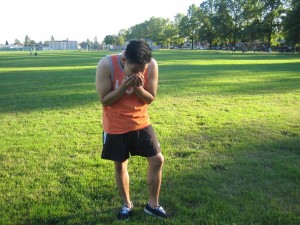Hay fever is an allergic reaction. It is the immune system reaction to foreign material in the air. Hay fever is also triggered by outdoor allergens such as mold and pollens.
[youtube url=”https://www.youtube.com/watch?v=lHhKe8o769U”]Hay fever affects both men and women and usually seasonal but can last for years if the allergen remains throughout the year. Spring and fall are the peak seasons for the condition. Hay fever is also called allergic rhinitis which causes cold symptoms like running nose, congestion, itchy eyes, sneezing and sinus pressure. Hay fever affects regular daily activities at work and at school and interferes with the life of a person.
Symptoms of hay fever
- Sneezing
- Cough
- Runny nose and nasal congestion
- Swollen and bluish discoloration of the skin under the eyes or allergic shiners
- Watery, itchy and red eyes or allergic conjunctivitis
- Itchiness of the nose, roof of the mouth or throat
- Postnasal drip
- Fatigue
Hay fever affects both men and women and usually seasonal but can last for years if the allergen remains throughout the year.
Treatment for hay fever
It is not possible to completely eliminate the allergens, but the symptoms can be minimized by avoiding exposure to them.
- Gargle using warm salt water. Simply mix 1-2 tablespoon of table salt to 8 ounces of warm water. Mix well and gargle the solution to help relieve the sore throat.
- Take the prescribed antihistamine to lessen the symptoms of runny nose, sneezing as well as the itchy eyes and throat.
Pollen or mold
- Avoid hanging laundry outside to prevent pollen from adhering to the bed sheets and towels
- Doors and windows should be closed during the peak pollen season
- Avoid performing outdoor activities early in the morning where there is abundant pollen in the air.
- Avoid mowing the lawn. This task should be delegated to others who have no allergies.
- Stay indoors during dry and windy days
- Use a high-efficiency particulate air or HEPA filter in all the rooms in the house
- Use a dehumidifier to lessen humidity inside the house.
- Wear a dust mask when gardening or cleaning the house
Dust mites
- Wash sheets, blankets and clothing in heated water at least 130 degrees F.
- Use allergy-proof covers for the mattresses, box springs and pillows
- Vacuum carpets regularly using a vacuum cleaner with a small particle or HEPA filter.
- Use a dehumidifier or air conditioner to lessen the indoor humidity.
- Spray an insecticide to eliminate dust mites.
- Remove carpeting especially when sleeping to minimize sensitivity to dust mites.
Cockroaches
- Fix faucet and pipes to minimize the number of cockroaches.
- Wash dishes properly and empty garbage bins regularly to prevent cockroach infestation.
- Cover all cracks and crevices where cockroaches usually enter.
- Keep food and pet food in sealed containers
- Sweep away any crumbs of foods from the floor and counters.
